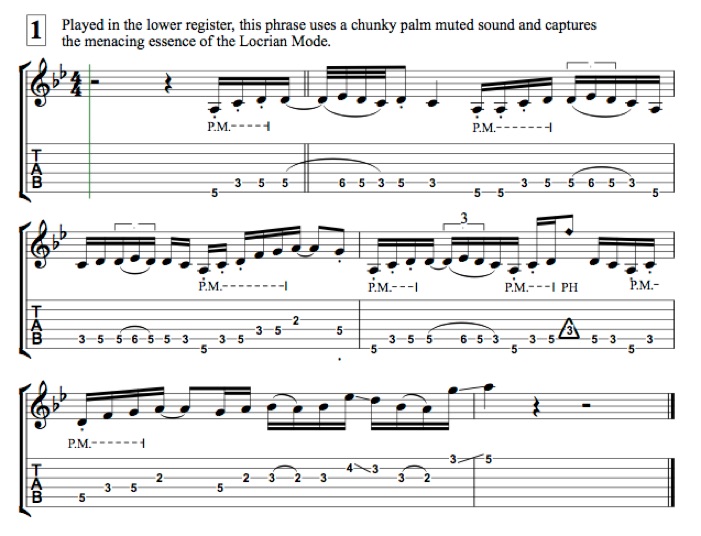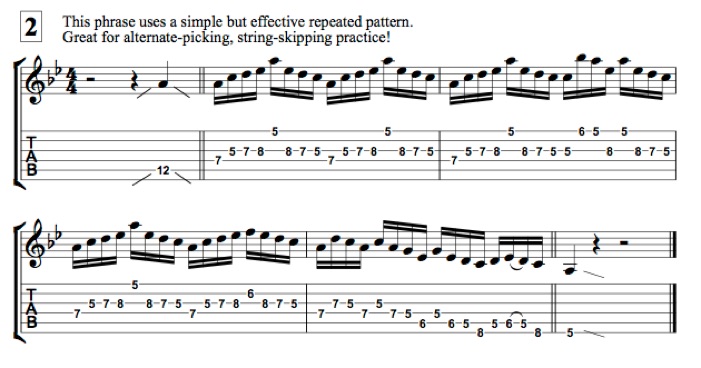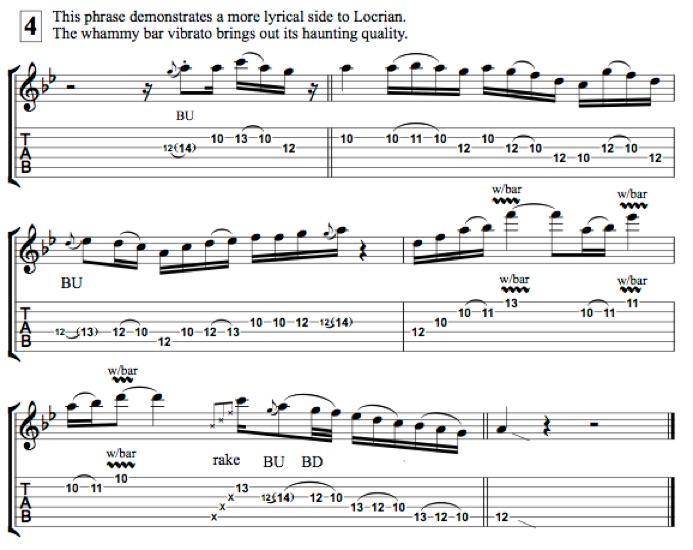The Locrian Mode Back to Modes
The Locrian mode originates from the 7th degree of the major scale eg. B to B in C major. Its scale degrees are R (root) b2 b3 4 b5 b6 b7. The root, b3 and b5 create a diminished triad meaning that this mode can only ever sound right when played over a half diminished (minor7 b5) chord - usually in jazz, or when played in over a pedal root note with no harmonic change. The latter is generally heard in a heavy metal context and the mood in this context is spooky and sinister eg. Enter Sandman by Metallica. It is the relationship between the root and the b5, known as a tritone (3 whole tones), which, being the most dissonant interval in western music, creates an unstable and tense sound. From at least the early 18th century this tritone was described as diabolus in musica (the Devil in music).
Using the A Locrian mode (A Bb C D Eb F G), we cannot use the standard 5 minor pentatonic shapes because of the flattened 5th so instead we will learn 5 shapes of ‘A minor pentatonic b5’ (A C D Eb G).
The notes sit inside the Locrian Mode and it can be helpful to see this clearly so firstly learn to play the 5 pentatonic shapes below. The ‘A’ root notes are black and other scale degrees are red with the scale degree number inside them. Fret numbers are indicated to the left of each diagram. Next, ‘pin’ the Locrian scale patterns onto the pentatonic ones and practice them one by one.






